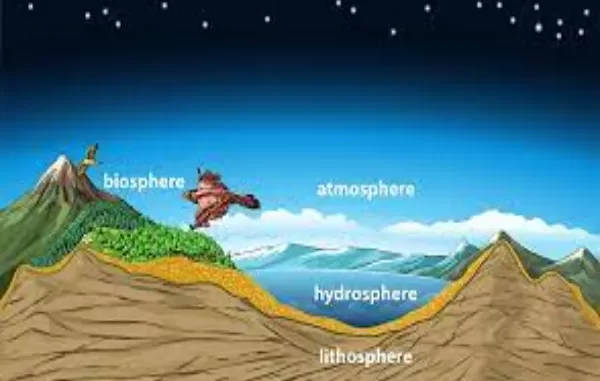
The Earth’s lithosphere is a fascinating layer of the Earth’s crust and mantle that contains a variety of interesting facts. It is the outermost layer of the Earth, and it is made up of both the Earth’s crust and the upper layer of the mantle. It is composed of solid rock and is made up of both continental and oceanic plates. This layer is constantly shifting and changing due to the constant movement of tectonic plates. The lithosphere is an important part of the Earth’s structure, and it plays a key role in the Earth’s geology, climate, and atmosphere. This article will provide some interesting facts about Earth’s lithosphere that will help you gain a better understanding of this important layer of the Earth. Find more content like this on our interesting facts about earths Anthroposphere blog post.
Uncovering Fascinating Facts About Earth’s Lithosphere

The lithosphere is the outermost layer of Earth that is composed of solid rock. It is divided into the upper crust and the lower mantle, both of which are composed of different types of rocks. The lithosphere is the layer that supports all life on Earth and is responsible for the shifting of tectonic plates. Here are some fascinating facts about the lithosphere:
- The lithosphere is the layer of Earth that is solid and stable, and it is estimated to be about 80-200 km thick.
- The upper crust is composed mostly of igneous and sedimentary rocks, and forms the surface of Earth. It is relatively thin and brittle, and is composed of two types of rocks: oceanic crust and continental crust.
- The lower mantle is composed of dense, plastic-like rocks, and is the layer beneath the lithosphere. It is composed of several layers, including the asthenosphere, which is the layer that is responsible for the shifting of tectonic plates.
- The lithosphere is constantly shifting and moving, as plates interact with one another and create earthquakes. The movement of these plates is known as plate tectonics, which is responsible for the creation of mountains and ocean basins.
- The lithosphere is constantly affected by the atmosphere, as winds, volcanic eruptions, and earthquakes can all have an impact on the Earth’s surface.
- The lithosphere is also home to a variety of mineral resources, including oil, gas, and coal. These resources can be used to generate energy, build infrastructure, and provide materials for manufacturing.
These are just a few of the fascinating facts about the Earth’s lithosphere. As this outer layer of Earth continues to shift and move, it is important to understand how the lithosphere plays an essential role in sustaining life on Earth.
Exploring the Unseen Wonders of Earth’s Lithosphere
The lithosphere, or the Earth’s outer crust, is a vast and mysterious realm. It is home to a myriad of wonders, far too many to be appreciated without a deeper exploration. Below the surface of our planet lies a world of secrets, from extraordinary minerals and gems to underground rivers and lakes.
Gemstones and minerals make up the majority of the lithosphere’s wonders. Rubies, sapphires, emeralds, and diamonds are just a few of the precious stones that can be found deep beneath the Earth’s surface. Even more spectacular are the lesser-known minerals such as selenite, galena, and quartz. These minerals can be found in a variety of forms – from sparkly crystals to intricate geodes.
The lithosphere is also home to a variety of underground rivers and lakes. These hidden bodies of water are often formed in cave systems and can remain undiscovered for centuries. The largest underground lake in the world, Lake Vostok, is located in Antarctica. It is estimated to be up to 6,000 feet deep and is believed to contain microbial life.
The lithosphere also contains an abundance of fossils, providing clues to prehistoric life on Earth. Unusual fossils such as the fossilized remains of an ancient whale found in Peru or the fossilized dinosaur eggs unearthed in China are just a few of the remarkable finds that have been discovered deep beneath the Earth’s surface.
The lithosphere is an ever-changing and dynamic realm of unseen wonders. Its secrets remain hidden from us, but with further exploration, we can uncover the remarkable beauty and power of the Earth’s outer crust.
Discovering the Incredible Formation of Earth’s Lithosphere
The Earth’s lithosphere is a fascinating and dynamic part of the planet’s structure. It is composed of the crust and upper mantle, and its formation has been of great interest to geologists and other scientists for many years. In this article, we will explore the incredible formation of the Earth’s lithosphere.
The lithosphere is created in two main ways. First, it is formed through tectonic processes. These processes involve the movement of the Earth’s tectonic plates, which are pieces of the lithosphere that move over the mantle in response to convection currents. This movement causes the lithosphere to form distinct boundaries between the continents and oceans.
Second, the Earth’s lithosphere is formed through volcanic activity. Magma, which is molten rock, rises up through cracks in the lithosphere and then hardens to form new layers of rock. This process is known as igneous intrusion, and it can create mountains, volcanoes, and other features.
The lithosphere is also affected by weathering and erosion. Over time, wind and water wear away the surface of the lithosphere, creating valleys, ravines, and other features. This process also helps to shape the boundaries of the Earth’s landmasses.
Finally, the Earth’s lithosphere can also be affected by human activities. Mining, construction, and other activities can cause damage to the lithosphere, as well as lead to the formation of new features.
The Earth’s lithosphere is an amazing and constantly-changing part of the planet. Its formation involves a complex series of processes, all of which contribute to the unique features that make up our planet. By understanding the formation of the Earth’s lithosphere, we can better understand the processes that shape our planet.
Leave a Reply